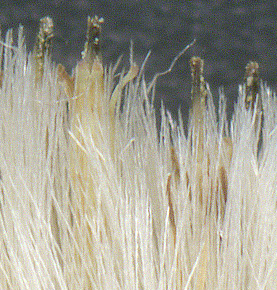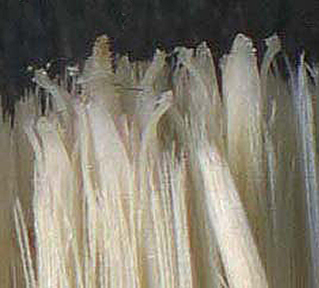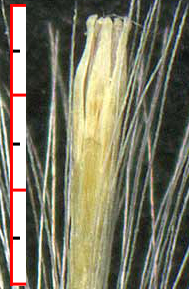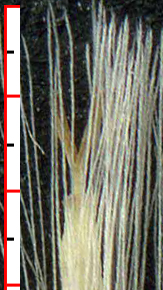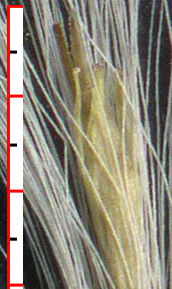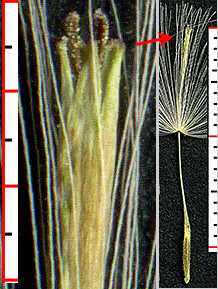

As can be seen in the above photos, the central florets of C. texana are more evident. Contrast the C. carduacea head on the far right above, with barely visible central florets.
The central florets have a zygomorphic 5–lobed tubular corolla, c. 1 cm long, narrowing from c. 0.5–0.9 mm to c. 0.18 from the base of the lobes' cleft down to the achene apex. Although the lobes often appear to be actinomorphic, the tube has two deep clefts dividing them into two sets, 3 + 2 — not always apparent without strong magnification. The central florets are the sole source of pollen for sexual reproduction.
Spring floral morphology is different for the two species.
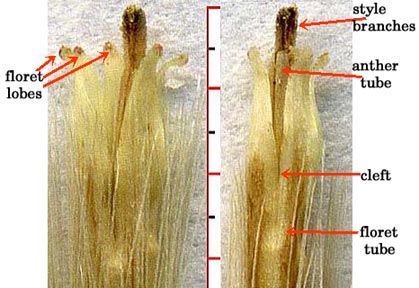
In spring phase the style branches push clumps of pollen up through the exserted anther tubes, as shown below (C. texana, left; C. carduacea, right). The style branches often remain within the anther tube.
(Place curson on image for date.)
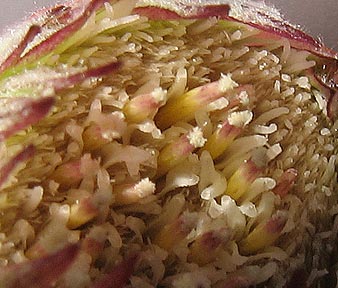
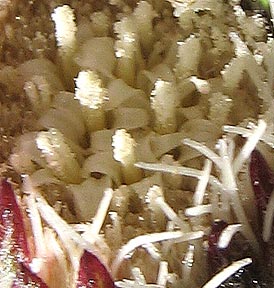
In fall/winter phase [shown below] (as well as in late spring) the corolla lobes are erect or only slightly spreading, the anther tubes are typically not exserted, pollen clumps are not produced, and the style branches are may or may not be exserted, often with little or no pollen visible. The possibility of apomixis and/or cleistogamy must be considered.
